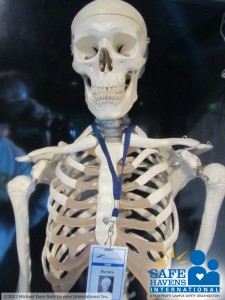Some parents and students from the Toots School in Bingham, Notts are upset that a student who allegedly stabbed 26 other students with the same needle was only suspended for five days. Administrators at the school apparently did not learn of the lunch-time attacks immediately and have defended their actions in not implementing a lockdown. Head teacher John Tomasevic defended this decision stating ‘A lock down would have been an over-reaction and anyway by the time we’d even done our preliminary investigations the school day had finished so that wasn’t a possibility.’ Mr. Tomasevic told reporters that the student was involved in a game and that the attacks were not malicious. Police have charged the 14-year-old student with suspicion of assault. Some parents also complained that they were not notified by school officials about the incident. Mr. Tomasevic told reporters that the school notified the parents of students who had been injured.
Students at the school are being tested for H.I.V. and parents are concerned that their children could become infected because so many students were stabbed with the same object which police identified as a lancet. British public health officials indicate that the chances of a serious infection are not high. Multiple victim stabbings at schools are not unheard of with multiple incidents occurring in Japan and China with 28 victims in one attack in the People’s Republic of China.
Edged weapons attacks have become far more common in British schools in recent years with a number of fatalities of students and staff reported. In an interview with British Metropolitan Police Officers in 2003, we learned that six students had been murdered at U.K. schools that year making the per capita homicide rate higher than for U.S. schools that year.
The response in the U.K. has been heavily geared to installing security cameras and issuing hand – held metal detectors for school officials to use to search students when they receive a tip that they might be carrying a weapon. Searches of students for weapons by school officials have lead to a number of deaths and serious injuries in the United States and we advise our clients that this is an inherently dangerous practice.
This case illustrates the importance of proper student supervision. The fact that school officials indicate that 26 children were attacked without school officials becoming aware immediately raises a red flag that student supervision may not have been effective.

